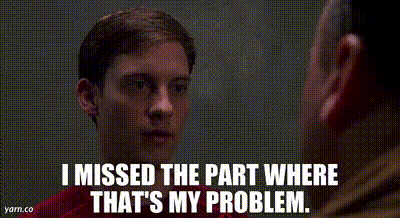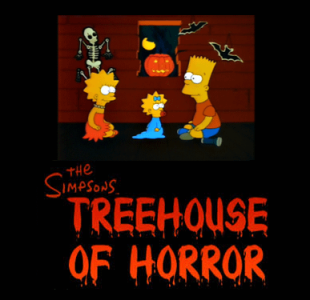[h2]Lost in Translation[/h2]
Beyond the Pale
David Ehrlich on
Lost in Translation
Scarlett Johansson’s rear end opens
Lost in Translation like a monolith knocked sideways. There it is, the film’s first image, expelling us from the darkness and into the delicate pink glow of sheer Arax underwear, split down the middle by a thin black line that runs up the girl’s legs like a secret. Indeed, nearly everything about her is a mystery, the still frame telling us only that she’s young and comfortable, with soft salmon skin that wouldn’t really be distinguishable from her clothing if not for the seams.
The cinema is home to any number of legendary *****: Bardot, Balthazar, Brett Ratner . . . and that’s just a sample of the Bs. Filmmakers have used them to a wide variety of ends, most often to tease, tempt, or titillate, but Sofia Coppola uses Scarlett Johansson’s as a cry for help. Her script begins: “The back of a GIRL in pink underwear, she leans at a big window, looking out over Tokyo.” The writing is lucid and spare, but the image, as it appears in the finished film, offers even less information—most critically, the curtain on that big window is pulled closed. The unmistakable sight of Tokyo blinking in the distance might have normalized the frame, deflating the image of its mystery and reducing its components to their most blunt interpretations—that’s Tokyo, that’s a crisp hotel bed, that’s a privileged white ***. Effectively, surrounding that totemic butt with detail would have solved it, which is a tactic counter to the film’s most basic approach to the inner lives of its characters and the rare beauty of the connection they share. But Coppola opts for obfuscation—the girl could be anywhere, but to know her is to learn why she isn’t.
We meet her *** before we know her name (it’s Charlotte) or even the film’s title; before we learn that she’s a 22-year-old Yale grad (philosophy major) who’s traveled as far away from her Los Angeles home as this planet will let her, accompanying her photographer husband on his latest assignment because she doesn’t know what else to do; before we know that she’ll soon be changed by a deep but sexless romance with fading film star Bob Harris (Bill Murray). The pale pink of her underwear isn’t random, but rather the last vestige of a world she understood, a girlhood where things made sense and dreams didn’t necessarily have to come true in order to invigorate. Her *** is the perfect representation of a girl who exists to us only as a long curve of questions. It’s a John Kacere painting (his Jutta hangs in Charlotte’s hotel room), but its ribald innuendo has been replaced by something we can’t quite define.
This image’s dislocating effect immediately prompts viewers to ask questions, which is perhaps the quickest way to desexualize any situation. Details become clues, their erotic value supplanted by their potential as evidence. The pink panties stretch across the middle of the frame—if this were a crime scene, they would be the murder weapon. You consider the cut of the underwear, snug but not seductive. Next, the opacity of the panties, which invite you to squint through the fabric, but frustrate particularly lu****l attempts to get a good look at what’s beneath (a brief detour to the blue sweater up north confirms that we’re witnessing a moment of relaxation rather than amorousness).
Finally, explicitly, we focus on their color, a fleshy, gender-intense but sexless tone with a hue just strong enough to demand further attention. The shade is confrontational even on first blush, and not much later—after Bob’s wife sends him a trans-Pacific package of barely differentiated carpet swatches—Coppola uses incident to confirm our suspicion that the color in her film is expressly communicative. Is all of that color inherent to the fabric, or is some of it glowing from beneath? And why pink?
The image explicitly forbids patterns. Every object in the room is solid and stable, thus limiting Charlotte’s available wardrobe options. Black panties would have been titillating and impenetrable, perhaps even draping the entire film in a patina of illicit sex that might have gotten tongues wagging at the expense of the sensitivity required to appreciate the relationship Bob forms with Charlotte. Beige would have been mute— hosiery the color of Johansson’s skin—white too innocent and clear, but pink speaks to a fundamental girlhood that Coppola’s films have all attempted to name.
For Coppola, pink isn’t a color so much as a feminine stop-loss between being young and being happy. In
The Virgin Suicides, pink was the air of impenetrability that covered the Lisbon girls like an irremovable veil. In
Marie Antoinette, pink arrived as tiered cakes and frivolous attitude, humanizing a young queen entrusted with an angry nation, and in
Somewhere, which was effectively a man’s tale, Coppola personified the color into a character, allowing it to grow and take its ultimate form in the shape of a Fanning sister. Johnny Marco’s daughter personified the best of himself that he had allowed to wither, sacrificed to a world intent on using him up. For these women, pink is a problem to be solved or make public, a private ideal they struggle to preserve and share. Indeed, the broader the context in which one considers Charlotte’s underwear, the less those Arax panties feel like a costume department’s quasi-arbitrary decision or a scrap from the bottom of Scarlett Johansson’s luggage. In fact, the story goes that Coppola was so insistent upon Charlotte wearing this particular undergarment that, to convince her shy actress to wear them, the director modeled them herself.
For Charlotte, pink is something to hold on to—if she were a Wong Kar-wai character, she might whisper it into a tree for safe-keeping. But the viewer is Charlotte’s only available repository as she lies semi-exposed in her swank but spare Park Hyatt Tokyo hotel room. Coppola intends for that curious shade of pink to stretch elastically over the rest of the film’s first reel, so that when she abruptly switches gears and introduces bedraggled fading movie star Bob Harris and follows his arrival at the hotel, his wide-eyed exhaustion reads like a response to that girl in repose. The film’s second shot startles Bob out of a nap in the backseat of a Tokyo cab, as if Charlotte’s disembodied backside was nothing but a Lynchian dream he was having, delicate and not salacious. Charlotte won’t reappear for another five minutes—her longest absence of the entire film—and when she does the hotel room curtains are now pulled wide open. We feel as if we know this girl, but we’re only allowed to see her face now that her room is gutted of color—her husband is asleep on his side of the bed, and Charlotte is wearing shorts. During the underwear’s sole reappearance in a subsequent scene, Charlotte flits around their room, busy with a mess of agitated hobbies (she knits, she smokes, she claims she’ll “stop later”) while her husband packs his photo gear, refusing to be entertained by the whims of his wife, ignoring her pink panties, her blue sweater, and her red flags.
Costume designer Nancy Steiner once described Charlotte’s underwear as “Fitting in with the stillness of the scene, that sense of being alone.” That sense of being alone is partially due to the fact that they aren’t the kind of underwear you’d throw on when other people are around. They’re the kind of underwear you wear when you’re making a scrapbook or watching
Roman Holiday on a Sunday afternoon, and Lance Acord’s gauzily gorgeous cinematography, which captures Charlotte’s whole life in various shades of pale Instagram, locates their soft pink sheen in the sweet-spot between unbearable intimacy and a numb veneer of cool.
She parades the panties in front of her husband because she’s desperate for him to become a part of her private world, rather than an affront to it, but he fails to recognize the extent to which she’s becoming more of an aesthete than she is an adult (Charlotte decorates their room with pink paper flowers, which her husband is too preoccupied to acknowledge). Pink prioritizes her privacy, and that privacy defines who Charlotte is when first we meet her, intensely personal but desperate not to feel alone. Right off the hop our relationship to her anticipates the one she’ll form with Bob. Perhaps this is why it doesn’t feel funny that she and Bob never introduce themselves to each other—she knows him for his celebrity, and he knows her because he sees Charlotte like we do (when they bust out of the hotel for a spirited night on the town, the pink wig she dons refocuses our appreciation for their mutual affinity).
We meet Charlotte as she wears those underwear in a disarmingly casual moment, but their color suggests that her clothing amounts to something of an embarrassed retreat. She’s a girl who doesn’t know where she is, and she’s arrived in Tokyo. The exotic megalopolis has only served to clarify her dislocation. She and Bob don’t mock or condescend to Japanese culture so much as they use it to reorient themselves—the place obviously makes no sense to them, but in some ways it feels a bit too much like home.
Her pink panties aren’t merely a safety blanket, but something she wears because she’s afraid that she might not recognize herself if she doesn’t. If Charlotte were only interested in stasis, the film around her might feel irreparably petulant and entitled, but the pink of her underwear immediately identifies Charlotte as someone who isn’t interested in staying a child so much as she is becoming the woman she knows herself capable of being. Here she is, the girl who loved taking pictures of her feet, now married to a successful photographer of questionable talent and integrity, desperate to reconcile the world as she’s come to know it with the world as she’s always hoped it was.
The film famously ends with Bob speaking words into Charlotte’s ear that we can’t hear, a sublimely romantic moment that galvanizes the relationship it concludes. Nevertheless, obstinately literal-minded fans of the film have done their best to solve Bob’s garbled whispers, and the most commonly accepted answer seems to be that his parting words to Charlotte are simply: “Don’t forget to tell the truth.” While any solution would be unsatisfying, this one is especially so—Charlotte has been broadcasting the truth from the very first frame, she just needed to find someone who didn’t need words to speak her language.
 Looking to build on it for tomorrow
Looking to build on it for tomorrow 









































